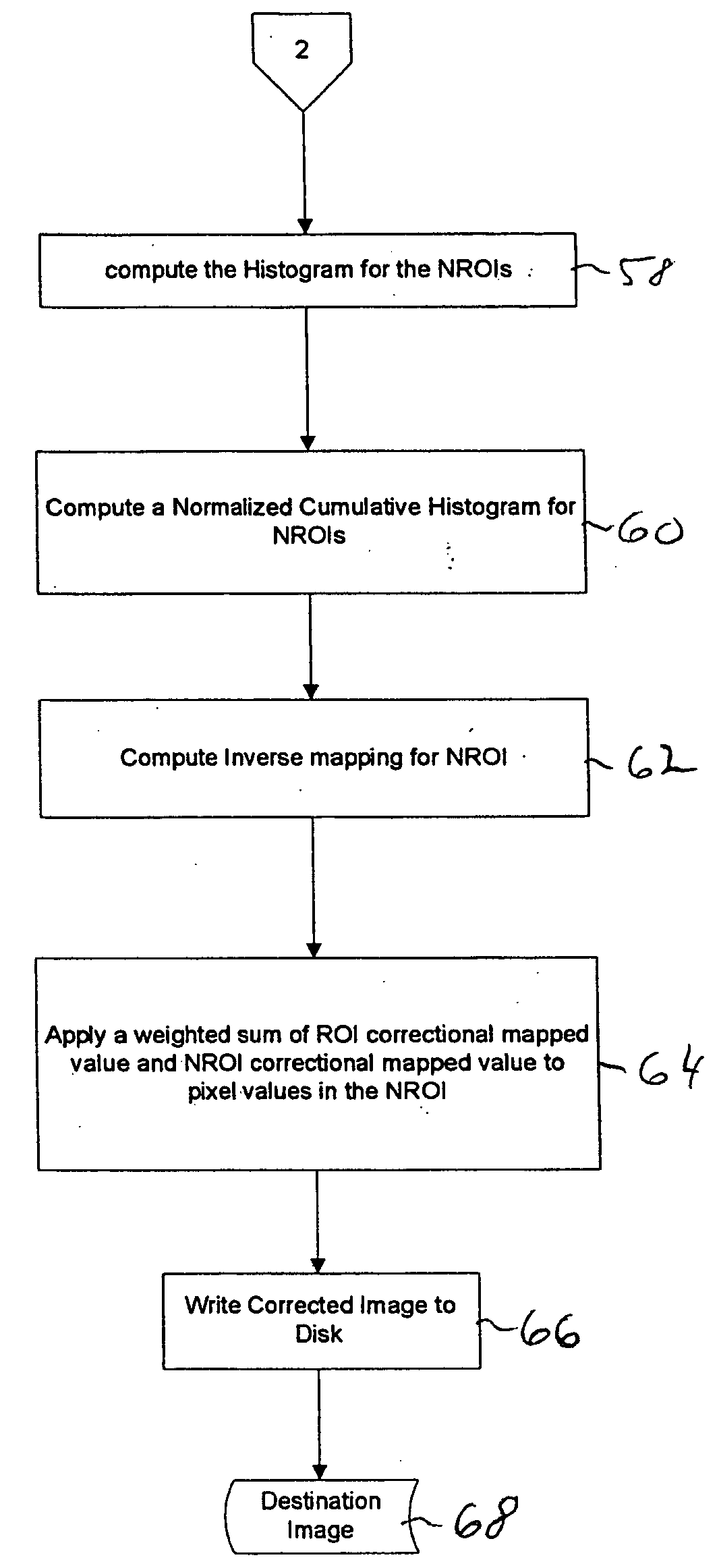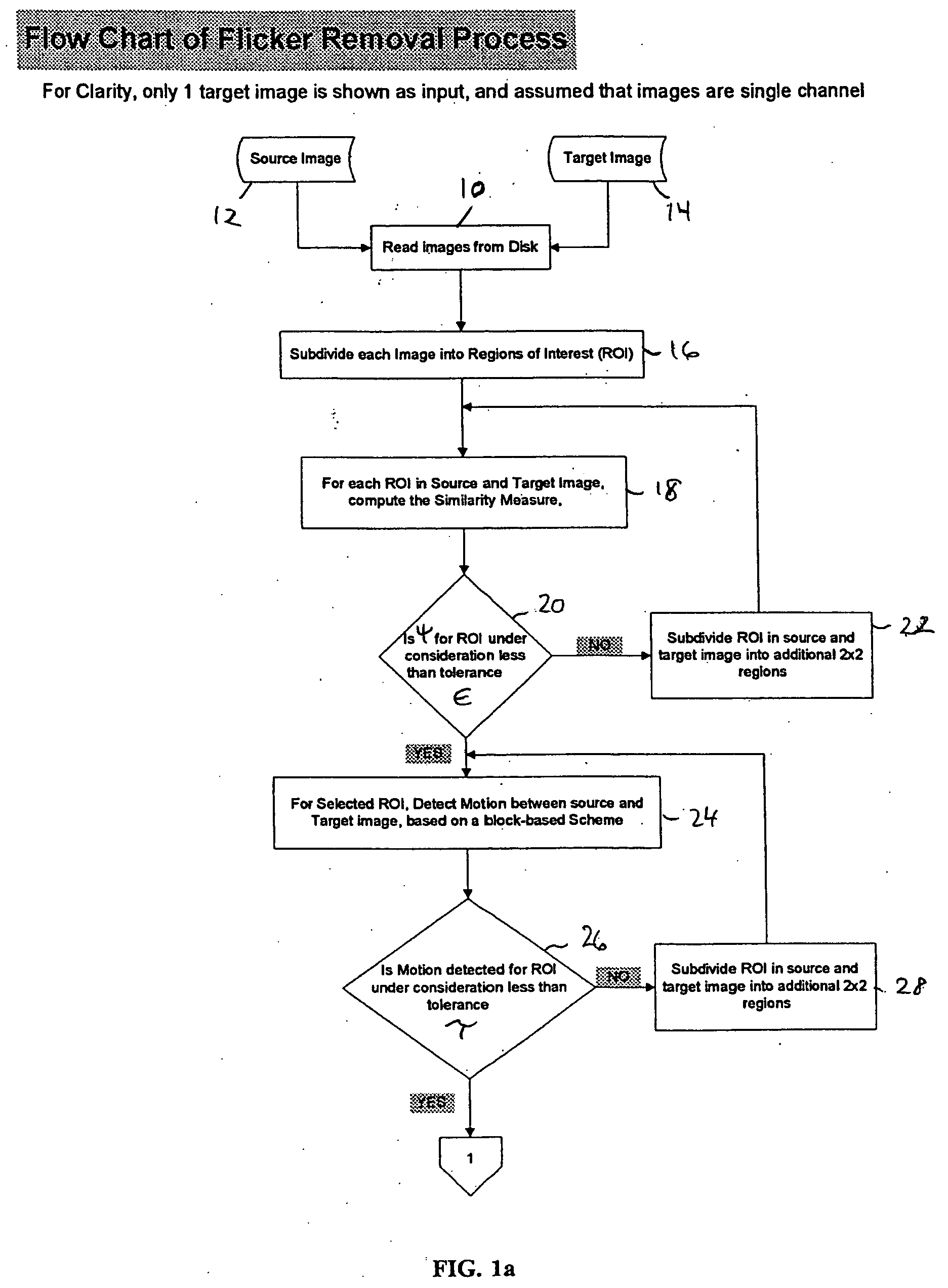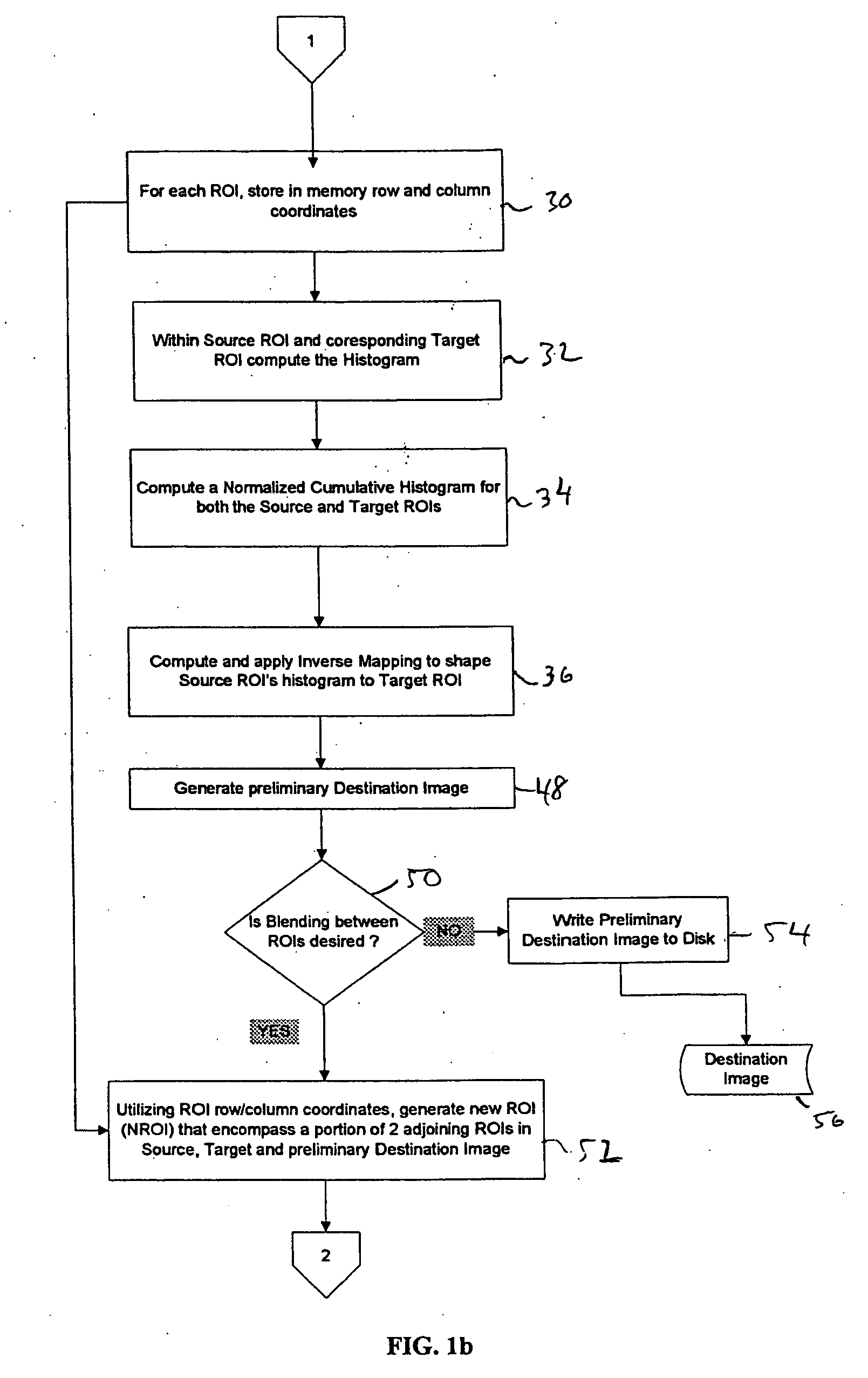Method and apparatus for flicker removal from an image sequence
a technology of image sequence and flicker removal, applied in the field of image processing, can solve the problems of uneven recording media cleaning, disparate storage conditions, random frame, etc., and achieve the effect of removing flicker
- Summary
- Abstract
- Description
- Claims
- Application Information
AI Technical Summary
Benefits of technology
Problems solved by technology
Method used
Image
Examples
Embodiment Construction
The method and apparatus of flicker removal according to the present invention is an algorithm designed to operate on a sequence of images that have a certain continuity of content and / or action in the sequence. Typically, such a sequence of images is referred to as a “shot” or “cut” in the film and digital imaging industry. This requirement is standard for any correction algorithm, since different shots are designed to vary dramatically for story reasons, and correction across a shot would modify the intent of the entire sequence. In one embodiment of the present invention, the algorithm was programmed in C++ and run on a Pentium 4 computer.
An exemplary algorithm according to the present invention is illustrated in FIGS. 1a-c. The first step 10 of the algorithm is to read a source image 12 and a target image(s) 14 from the sequence of images, which are stored on disk. In the case where the sequence of images is a sequence of frames from a motion picture, each of the source and t...
PUM
 Login to View More
Login to View More Abstract
Description
Claims
Application Information
 Login to View More
Login to View More - R&D
- Intellectual Property
- Life Sciences
- Materials
- Tech Scout
- Unparalleled Data Quality
- Higher Quality Content
- 60% Fewer Hallucinations
Browse by: Latest US Patents, China's latest patents, Technical Efficacy Thesaurus, Application Domain, Technology Topic, Popular Technical Reports.
© 2025 PatSnap. All rights reserved.Legal|Privacy policy|Modern Slavery Act Transparency Statement|Sitemap|About US| Contact US: help@patsnap.com



